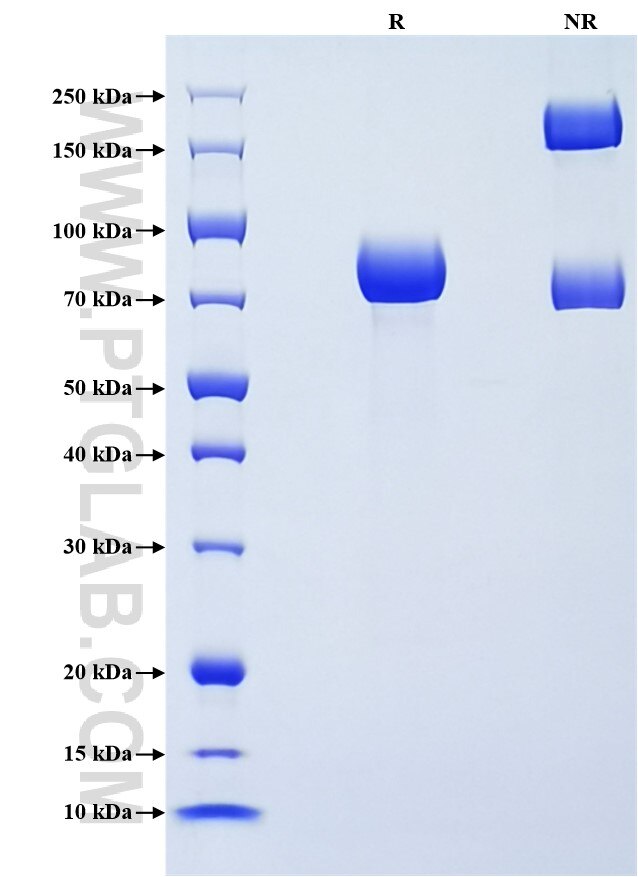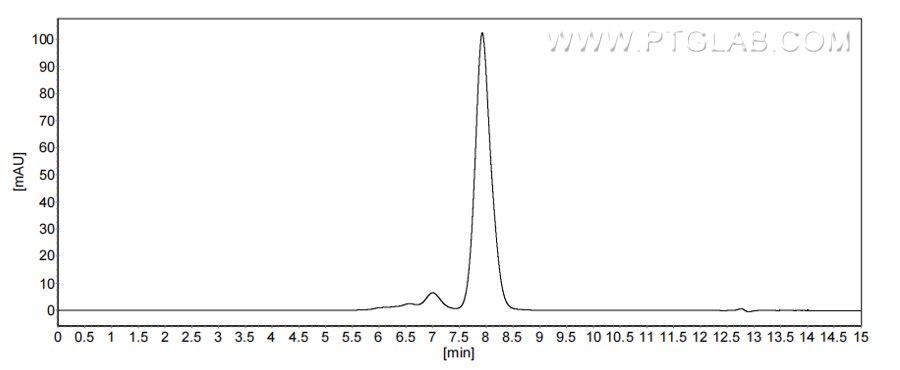Recombinant Mouse Angiotensinogen protein (rFc Tag) (HPLC verified)
Species
Mouse
Purity
>90 %, SDS-PAGE
>90 %, SEC-HPLC
Tag
rFc Tag
Activity
not tested
Cat no : Eg2763
Validation Data Gallery
Product Information
| Purity | >90 %, SDS-PAGE >90 %, SEC-HPLC |
| Endotoxin | <0.1 EU/μg protein, LAL method |
| Activity |
Not tested |
| Expression | HEK293-derived Mouse Angiotensinogen protein Asp25-Val477 (Accession# P11859) with a rabbit IgG Fc tag at the C-terminus. |
| GeneID | 11606 |
| Accession | P11859 |
| PredictedSize | 75.6 kDa |
| SDS-PAGE | 70-85 kDa, reducing (R) conditions |
| Formulation | Lyophilized from 0.22 μm filtered solution in PBS, pH 7.4. Normally 5% trehalose and 5% mannitol are added as protectants before lyophilization. |
| Reconstitution | Briefly centrifuge the tube before opening. Reconstitute at 0.1-0.5 mg/mL in sterile water. |
| Storage Conditions |
It is recommended that the protein be aliquoted for optimal storage. Avoid repeated freeze-thaw cycles.
|
| Shipping | The product is shipped at ambient temperature. Upon receipt, store it immediately at the recommended temperature. |
Background
Angiotensinogen is a precursor of angiotensin II (Ang II), is expressed and synthesized largely in the liver and is cleaved by the enzyme renin in response to lowered blood pressure. AGT is an essential component of the RAS. AGT is cleaved by renin enzyme to produce angiotensin 1 (Ang I) when blood pressure is reduced, and AGT-converting enzyme (ACE) splits Ang I to generate angiotensin 2 (Ang II). RAS plays an important role in maintaining fluid and electrolyte homeostasis, and RAS irregulated expression leads to kidney disease, heart failure, hypertension, and diabetes.
References:
1. Matsusaka T, et al. (2012). J Am Soc Nephrol. 23(7):1181-9. 2. Lu H, et al. (2016). Hypertens Res.39(7):492-500. 3. Li S, et al. (2021). Mol Med Rep. 23(3):193. 4. Wegman-Ostrosky T, et al. (2015). J Renin Angiotensin Aldosterone Syst.16(2):227-33. 5. Ames MK, et al. (2019). J Vet Intern Med. 33(2):363-382. 6. Li XC, et al. (2017). 125(Pt A):21-38.

